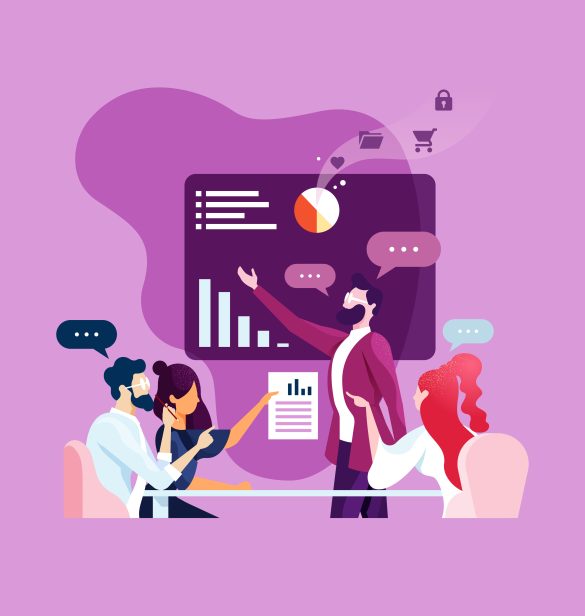Introduction
In the fast-paced world of Software-as-a-Service (SaaS), keeping customers engaged and satisfied is essential for business success. Unlike traditional software purchases, where customers make a one-time payment, SaaS operates on a subscription model. This means companies must consistently deliver value to retain users and encourage renewals. Understanding the SaaS customer journey—from the initial awareness stage to renewal—is crucial for optimizing every interaction, improving customer experience, and minimizing churn. This article explores the key stages of the SaaS customer journey, offering insights into how businesses can enhance customer relationships and drive long-term growth.
Awareness Stage: Capturing Interest
The journey begins when potential customers recognize a problem and start looking for solutions. This is a critical moment for SaaS companies, as first impressions can determine whether a prospect engages further. Businesses must invest in content marketing strategies such as blogs, whitepapers, and case studies to educate potential users and position themselves as industry leaders. Search engine optimization (SEO) and paid advertising campaigns enhance visibility and ensure the right audience finds the product. Social media engagement, particularly on platforms like LinkedIn and Twitter, helps establish credibility and fosters connections with potential customers. For instance, a SaaS company offering marketing automation software might publish a detailed guide on leveraging AI to improve lead generation, attracting users searching for automation solutions.
Consideration Stage: Evaluating Options
Once prospects are aware of potential solutions, they move into the consideration stage, where they compare different SaaS offerings based on features, pricing, and customer reviews. To stand out, companies must showcase their product’s unique advantages through webinars, live demonstrations, and comprehensive product walkthroughs. Customer testimonials and case studies provide social proof and help build trust. Clearly articulating the benefits of the software over competitors is essential for influencing decision-makers. For example, a cloud-based project management tool might host a live webinar demonstrating how its platform simplifies collaboration, making it easier for teams to stay organized and productive.
Decision Stage: Converting Leads into Customers
At this stage, prospects are ready to make a purchase decision, and the goal is to streamline the conversion process. Offering free trials or freemium models allows potential users to experience the software firsthand, reducing hesitation. Personalized pricing plans cater to different business needs, making the offering more accessible. Simplifying the signup and checkout process ensures a frictionless experience, encouraging more conversions. A SaaS-based CRM, for instance, might provide a 14-day free trial with full functionality, followed by an exclusive discount for early subscribers to incentivize sign-ups.
Onboarding Stage: Ensuring a Smooth Start
A well-structured onboarding process significantly impacts long-term customer retention. If users struggle to navigate the software, they may abandon it early. Interactive product tours and in-app tutorials help guide customers through key features, making adoption easier. Personalized onboarding emails with helpful resources, FAQs, and best practices enhance the user experience. Providing dedicated customer support through live chat or account managers ensures high-value clients receive immediate assistance. For example, a data analytics SaaS platform might offer an AI-driven onboarding assistant to help users upload data and generate reports efficiently, improving early engagement.
Retention Stage: Driving Long-Term Engagement
Acquiring customers is only the first step; keeping them engaged is the real challenge. Continuous value delivery is crucial to prevent churn and ensure long-term retention. Regular software updates and new features based on customer feedback demonstrate a commitment to improving the user experience. Proactive customer support, including self-help resources and dedicated account managers, helps resolve issues before they lead to cancellations. Loyalty programs, referral incentives, and exclusive discounts encourage users to remain active. A team collaboration software, for instance, might introduce an AI-powered task prioritization feature based on user feedback, increasing engagement and satisfaction.
Expansion Stage: Upselling and Cross-Selling
Once customers are actively engaged, SaaS companies have the opportunity to increase revenue through upselling and cross-selling. Recommending higher-tier plans based on usage patterns encourages customers to upgrade for additional features and capabilities. Expanding product offerings with integrations and add-ons enhances the core software’s functionality. Regular communication with customers through success initiatives helps identify opportunities for expansion. For example, a SaaS accounting software provider might suggest an advanced payroll module to businesses with growing teams, offering them a seamless way to manage employee payments.
Renewal or Churn Stage: Encouraging Loyalty
Renewals are vital for SaaS businesses, as customer retention directly impacts revenue. Companies must take proactive steps to ensure customers see ongoing value in their subscriptions. Automated renewal reminders keep users informed before their subscription expires, reducing the likelihood of accidental churn. Collecting feedback through exit surveys helps identify common issues and areas for improvement. Implementing win-back campaigns with special incentives, such as discounts or additional features, can persuade users to stay. A video conferencing SaaS platform, for instance, might offer a complimentary month to users considering cancellation, giving them more time to reassess the platform’s benefits.
Conclusion
The SaaS customer journey is a dynamic and multi-stage process that requires a data-driven and customer-centric approach. From initial awareness to renewal, optimizing each stage helps businesses maximize retention, reduce churn, and foster long-term success. By focusing on personalized customer experiences, proactive support, and strategic marketing efforts, SaaS companies can build lasting relationships with their users. In a competitive market, those who prioritize customer success and continuously refine their strategies will stand out and thrive, ensuring sustainable growth and customer satisfaction.
[/vc_column_text][/vc_column][/vc_row]

